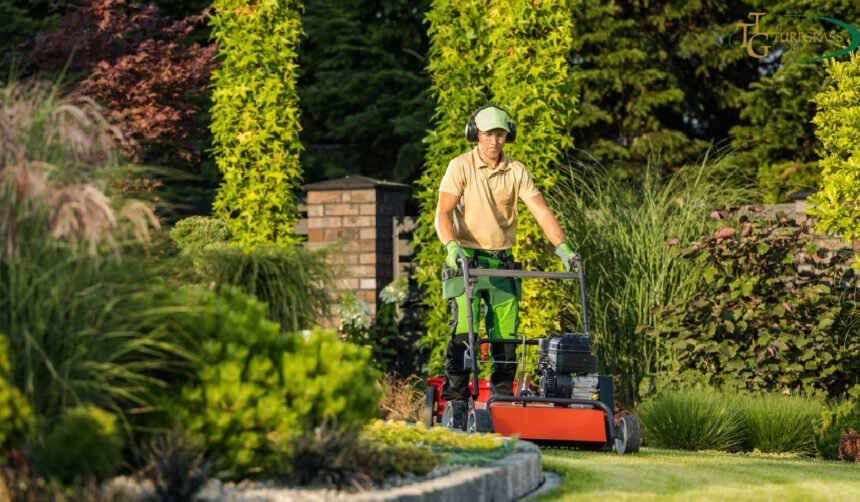Maintaining a beautiful lawn isn’t just about aesthetics; it’s about creating an inviting, healthy outdoor space that enhances your property and provides enjoyment throughout the year. Whether you’re a homeowner wanting to boost curb appeal or a landscaping enthusiast seeking the best lawn care practices, understanding the essentials of lawn maintenance is vital.
This comprehensive guide explores key lawn maintenance practices, common challenges, seasonal tips, and expert advice to help you cultivate a lush, green lawn you can be proud of.
Why Lawn Maintenance Is Important
A well-maintained lawn offers numerous benefits beyond its appearance. It:
- Protects soil from erosion and runoff
- Provides a cool, natural surface that reduces heat
- Supports local ecosystems by filtering air and water
- Creates a safe, soft space for children and pets to play
- Increases property value and curb appeal
Neglecting lawn maintenance can lead to patchy grass, weeds, pests, and poor soil quality, ultimately costing more time and money to fix later. Regular care, including mowing, fertilizing, and aerating, helps maintain a lush and healthy lawn year-round. Working with a trusted Indianapolis soil provider ensures your lawn receives the right nutrients and soil quality to thrive.
Key Components of Effective Lawn Maintenance
Proper Mowing Techniques
Mowing is a critical part of lawn maintenance, but mowing incorrectly can damage your grass.
- Mow to the right height: Different grass species have optimal mowing heights, typically between 2.5 and 4 inches. Cutting too short stresses the grass, weakening roots and inviting weeds.
- Mow frequently: Avoid removing more than one-third of the grass blade length at a time. Regular mowing encourages thick, healthy growth.
- Keep mower blades sharp: Dull blades tear the grass instead of cutting cleanly, leading to disease and browning.
- Vary mowing patterns: Changing direction each mow prevents soil compaction and encourages upright grass growth.
- Smart Watering Practices
Watering your lawn correctly is essential to maintaining healthy roots and vibrant grass.
- Water deeply and less often: Aim for about one inch of water per week, including rainfall. Deep watering encourages roots to grow downward, making grass more drought-resistant.
- Water early in the day: Morning watering reduces evaporation and fungal growth.
- Avoid frequent shallow watering: This leads to weak, shallow roots vulnerable to stress.
- Fertilizing for Growth
Fertilizing replenishes vital nutrients in the soil, helping your lawn thrive.
- Test your soil: Before fertilizing, test the soil to determine nutrient needs.
- Use balanced fertilizer: Choose fertilizer formulas that include nitrogen, phosphorus, and potassium suited to your grass type.
- Apply according to schedule: For cool-season grasses, fertilize in early spring, late spring, late summer, and fall. Warm-season grasses may require different timings.
- Avoid over-fertilizing: Excess fertilizer can cause leaf burn and promote thatch buildup.
- Weed and Pest Management
Weeds and pests compete with grass and can damage your lawn if uncontrolled.
- Prevent weeds: Use pre-emergent herbicides in early spring to stop weed seeds from germinating.
- Spot-treat weeds: Hand-pull or use selective herbicides on existing weeds.
- Monitor for pests: Watch for signs like discoloration or patchy growth, and treat promptly with appropriate insecticides or natural remedies.
- Maintain lawn health: A dense, healthy lawn naturally suppresses weeds and pests.
- Aeration
Aerating the soil helps relieve compaction, allowing air, water, and nutrients to penetrate roots.
- Core aeration: Removes plugs of soil and is ideal for lawns with heavy foot traffic or clay soil.
- Best done during growing season: Aerate cool-season grasses in early fall or spring; warm-season grasses in late spring or early summer.
- Frequency: Most lawns benefit from aeration once a year, but heavily used lawns may require more.
- Overseeding and Lawn Repair
Overseeding improves lawn density and fills bare patches.
- Choose appropriate seed: Match seed to your existing lawn type and climate.
- Prepare soil: Mow low and rake to loosen soil before overseeding.
- Timing: Fall is often best for cool-season grasses, while spring suits warm-season types.
- Water consistently: Keep seeded areas moist until grass is established.
Seasonal Lawn Maintenance Tips
Spring
- Clean debris and leaves from the lawn.
- Aerate to reduce soil compaction.
- Apply pre-emergent weed control.
- Fertilize to encourage spring growth.
Summer
- Water deeply, ideally early morning.
- Mow regularly, keeping blades sharp.
- Watch for pests and treat promptly.
- Avoid heavy foot traffic during heat stress.
Fall
- Overseed thin or bare areas.
- Apply fertilizer to strengthen roots.
- Rake leaves regularly to prevent smothering.
Winter
- Minimize traffic on frozen or dormant grass.
- Store and maintain lawn equipment.
- Plan for next season’s lawn care activities.
Tips for Choosing Lawn Maintenance Services
If you prefer to outsource lawn care, consider these factors:
- Reputation and reviews
- Range of services offered (mowing, fertilizing, aeration, pest control)
- Licensed and insured providers
- Customized care plans for your lawn type
- Use of environmentally friendly products
- Transparent pricing and contracts
Common Lawn Maintenance Mistakes to Avoid
- Cutting grass too short: Causes stress and vulnerability.
- Overwatering or underwatering: Both can damage roots.
- Applying fertilizer at wrong times: Leads to wasted resources or lawn burn.
- Ignoring soil health: Neglecting soil testing results in ineffective care.
- Delaying weed and pest control: Allows problems to worsen.
Conclusion
Lawn maintenance is an ongoing process that requires attention, patience, and care. By following the right mowing, watering, fertilizing, aeration, and weed control practices, you can cultivate a vibrant, healthy lawn that enhances your property and provides a welcoming outdoor space.
Whether you choose to handle lawn maintenance yourself or hire professionals, staying informed about best practices ensures your lawn remains resilient and beautiful throughout every season.
For More Information, Visit Dotmagazine








